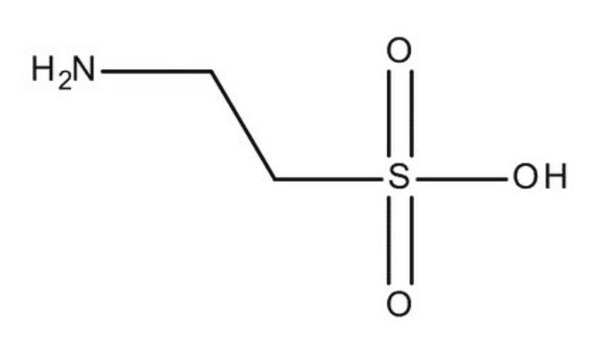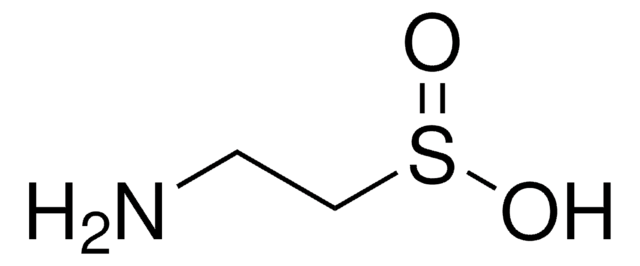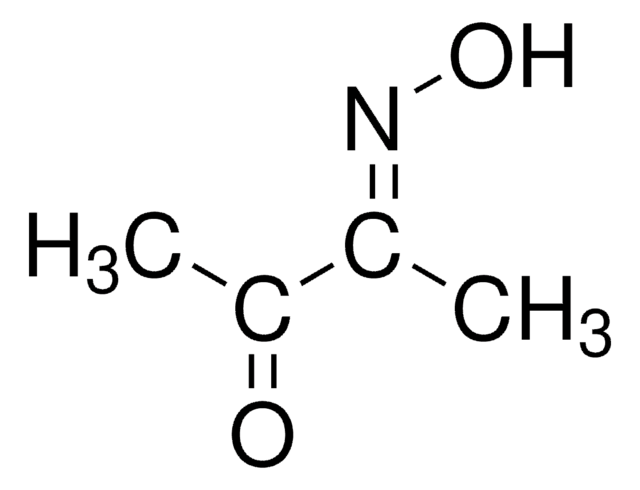W381306
Taurine
≥98%, FG
Synonym(s):
2-Aminoethanesulfonic acid
About This Item
Recommended Products
biological source
synthetic
Quality Level
grade
FG
Halal
Kosher
Agency
meets purity specifications of JECFA
reg. compliance
EU Regulation 1334/2008 & 178/2002
FDA 21 CFR 117
Assay
≥98%
mp
>300 °C (lit.)
application(s)
flavors and fragrances
Documentation
see Safety & Documentation for available documents
food allergen
no known allergens
Organoleptic
odorless
SMILES string
NCCS(O)(=O)=O
InChI
1S/C2H7NO3S/c3-1-2-7(4,5)6/h1-3H2,(H,4,5,6)
InChI key
XOAAWQZATWQOTB-UHFFFAOYSA-N
Looking for similar products? Visit Product Comparison Guide
General description
Application
- Efficacy of taurine-enhanced enteral nutrition in improving the outcomes of critically ill patients: A systematic review and meta-analysis.: This meta-analysis evaluates the effectiveness of taurine-enhanced enteral nutrition in critically ill patients. The results indicate that taurine supplementation significantly improves patient outcomes, including reduced inflammation and enhanced recovery rates (Zhang et al., 2024).
- Taurine reduces the risk for metabolic syndrome: a systematic review and meta-analysis of randomized controlled trials.: This systematic review and meta-analysis demonstrate that taurine supplementation can significantly reduce the risk of metabolic syndrome. The findings support taurine′s potential as a therapeutic agent in managing metabolic health and preventing related diseases (Tzang et al., 2024).
Biochem/physiol Actions
Storage Class Code
11 - Combustible Solids
WGK
WGK 2
Flash Point(F)
Not applicable
Flash Point(C)
Not applicable
Personal Protective Equipment
Choose from one of the most recent versions:
Already Own This Product?
Find documentation for the products that you have recently purchased in the Document Library.
Customers Also Viewed
Our team of scientists has experience in all areas of research including Life Science, Material Science, Chemical Synthesis, Chromatography, Analytical and many others.
Contact Technical Service







